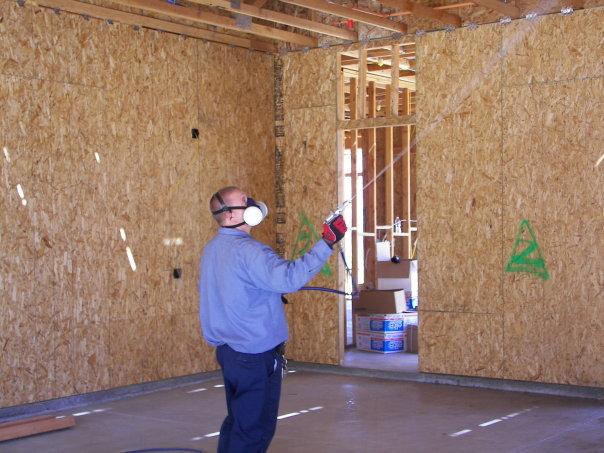If you’ve had a termite problem in the past, the last thing you want is another one. While treatments such as Orange Oil and fumigation may successfully eradicate a termite population in your home, they offer no guarantee against reinfestation down the road, which is why it’s important to take preventative measures. Consider the following tips:
Thoroughly paint and seal exposed wood
One of the most basic preventative measures you can take to protect your home against reinfestation is to make sure any exposed woodwork (both exterior and interior) is thoroughly painted and/or sealed. Things like exterior rafter tails and siding should be coated with paint and sealant to effectively protect the wood from termites. An equally important part of this is “back-painting,” which is the practice of painting wood that doesn’t show. Though it might seem pointless to paint an area that no one sees, it ensures there are no vulnerable areas for termites to access and provides extra protection against dry rot. In addition to exterior siding and beams, you should also back-paint exposed wood in garages, attics and basements. Instead of paint, consider applying a borate salt product such as Timbor for a quicker and less expensive way to seal the exposed wood in and around your home.

While an effective treatment can successfully eliminate a termite infestation, it’s no guarantee against reinfestation. Photo: Pacific Coast Termite (2013)
Eliminate soil contact with foundation wood
Termites can find their way into a home through soil that’s in direct contact with wooden elements of its foundation, so eliminating this contact is another crucial preventative step. This may entail cutting the bottom off of wood latticework, supporting steps or posts on a concrete base. Not even pressure-treated wood is impermeable to a termite attack, as the pests can get in through cut ends and cracks.
Divert water and eliminate moisture
Since termites are attracted to moisture, preventative steps need to be taken to minimize the presence of standing water and latent moisture around your house’s foundation. Properly functioning gutters, downspouts and splash blocks are critical, as is adequate grading (sloping) of the ground near the foundation. Be sure to repair any leaking faucets, water pipes and air conditioning units; adjust lawn sprinklers and irrigation systems to prevent excessive puddling; place a moisture barrier on the floor of your crawl space or basement; and remove any piles of soil beneath your porch.
To find a Diamond Certified termite control company in your area, click on one of the links below.
Alameda County: www.diamondcertified.info/alameda-termite-control
Contra Costa County: www.diamondcertified.info/contra-costa-termite-control
Marin County: www.diamondcertified.info/marin-termite-control
Napa County: www.diamondcertified.info/napa-termite-control
San Francisco: www.diamondcertified.info/san-francisco-termite-control
San Mateo County: www.diamondcertified.info/san-mateo-termite-control
Santa Clara County: www.diamondcertified.info/santa-clara-termite-control
Santa Cruz County: www.diamondcertified.info/santa-cruz-termite-control
Solano County: www.diamondcertified.info/solano-termite-control
Sonoma County: www.diamondcertified.info/sonoma-termite-control
One Response
Leave a Reply
You must be logged in to post a comment.

Your article has inspired me to repaint all of my walls. We had a catastrophic termite infestation last year. Our home barely survived, and I don’t want to risk another episode. I don’t think there is any wood in the soil, and I live in the desert. I guess the only thing I can do is keep a fresh coat on all the exposed wood. Thank you for the information.